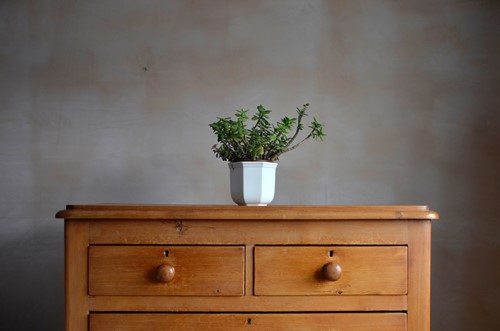Upcycle an Antique Dresser or Cabinet into a One-of-a-Kind Bathroom Vanity

Photo by Zbysiu Rodak on Unsplash
Antiques can bring a unique feel and vibe to almost any decor. But what happens when your antique piece doesn't exactly work in the room it was designed for? If that is the case, it may be time to upcycle it for use in a different room. Below you will find out how to turn your one-of-a-kind antique dresser into a unique vanity for your bathroom. Please note, if at any time you feel this project is a little more than DIY, contact a professional to help you through it.
1. Purchase the Sink
You will need to find a sink that can fit within the measurements of the top of your dresser. When measuring, always be sure to measure the actual with of the base of the cabinet or dresser, not the overhang. The sink will be deep enough to pass this point, and most overhangs will be at least an inch or more.
2. Trace & Cut the Sink Hole
After removing the top drawer from the dresser, trace the template that came with the sink onto the top of the dresser with a permanent marker to give you a guide for cutting. Next, use a jigsaw to follow the lines, and cut the piece of wood. Once done, check to make sure that your sink fits, and remove more if needed to accommodate.
3. Finish the Dresser
Once you know that the sink fits, remove it, and sand down the cut area until it is smooth. Then, finish the dresser using your favorite stain or paint. After the paint or stain has dried, add a protective clear coat as this area will be affected by water.
4. Affix the Sink to the Dresser
After your dresser is completely dry, you will need to apply some clear caulking around the rim. Then place the sink on top and press down firmly. You should not need to add any caulking after placing, but make sure you can see the seal all around it.
5. Cut the Back to Accommodate Plumbing & Connect Your Pipes
Determine where the plumbing pipes will need to be attached to the dresser, and cut a hole to allow them to pass through. Next, connect all of your plumbing, making sure to use plumbers tape when connecting to reduce the risk of leaks.
6. Secure the Dresser to the Wall
You will want to make sure that your new vanity is tightly affixed to the wall by more than just the plumbing. Once flush against the wall, secure the dresser to the wall-in studs.
By following the few simple tips above, you can convert your favorite antique dresser or cabinet into a fully functional vanity. This can make a great option for those looking for more vanity drawers or storage in their bathroom.
About the Author

Deborah Tomczak
Hello, my name is Deborah Tomczak, One of the Top Selling Real Estate Agents on the Space Coast working with Remax/Elite.
I specialize in the business of pairing discerning buyers with homes that match their wants and needs, and maximizing profits for people with real estate to sell. My commitment to you is that I will make sure you are communicated with during the entire process to reduce stress and ensure a positive outcome.
I bring a 25 year corporate career in marketing and advertising to my 19 year real estate business, allowing me to utilize skills and experience to make the best use my clients time and minimize unforeseen challenges that may arise.
I'd be honored to put my real estate experience to work for you.